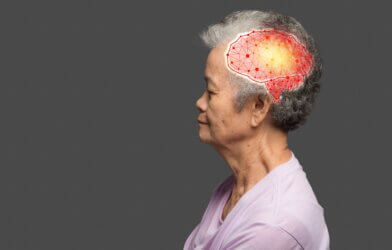Imagine if your everyday smartwatch could do more than just count your steps or remind you to stand up every hour. What if it could also detect early warning signs of Alzheimer’s disease, years before any noticeable symptoms appear? This is the exciting possibility suggested by a new study led by researchers at the Johns Hopkins Bloomberg School of Public Health.
Published in the journal SLEEP, the study analyzed movement data from wristwatch-like devices called actigraphs worn by 82 cognitively healthy older adults. These participants were part of a long-running study on aging, and some of them had a key feature of Alzheimer’s disease: a buildup of the protein amyloid beta in their brains, as detected by PET scans.
Understanding Alzheimer’s Disease
Alzheimer’s disease is the leading cause of dementia, estimated to affect more than 6 million older adults in the U.S. alone. It’s characterized by the accumulation of amyloid plaques and tangles in the brain, which can begin a decade or two before any symptoms of dementia appear.
Currently, the only approved treatments that may slow the progression of Alzheimer’s are those that target amyloid beta and reduce the plaques. Many researchers believe that such treatments could be much more effective if given earlier in the disease course—ideally, years before dementia becomes evident.
This is where the potential of actigraphs comes in. Using a sensitive statistical technique called FOSR (function-on-scalar regression), the researchers found significant differences in daily activity patterns between the “amyloid-positive” group (those with detectable brain amyloid buildup) and the “amyloid-negative” participants.
The Rhythm of Alzheimer’s
Specifically, the amyloid-positive participants had higher mean activity levels in certain afternoon periods and less day-to-day variability in activity across a broader range of time windows compared to the amyloid-negative participants.
“We need to replicate these findings in larger studies, but it is interesting that we’ve now seen a similar difference between amyloid-positive and amyloid-negative older adults in two independent studies,” says lead author Adam Spira, PhD, professor in the Department of Mental Health at the Bloomberg School, in a statement.
These findings build upon an earlier, smaller study also led by Spira, which found similar patterns of increased afternoon activity and decreased variability among amyloid-positive individuals. While the exact reasons for these differences are not yet clear, they may be related to a phenomenon called “sundowning,” where individuals with Alzheimer’s experience increased agitation in the afternoon and early evening.
“It’s conceivable that the higher afternoon activity we observed is a signal of ‘preclinical sundowning,'” Spira says. However, he cautions that these findings represent averages among a small sample over a short period of time. “We can’t predict whether an individual will develop amyloid plaques based on the timing of their activity. So, it would be premature for older people to be concerned because their fitness trackers say they are particularly active in the afternoon, for example.”
The Promise and Challenges Ahead
The idea of using wearable devices to detect early signs of Alzheimer’s is an exciting one. If future studies confirm that abnormal patterns of sleep and waking activity are indeed early indicators of the disease, older adults could potentially wear smartwatch-like devices that automatically track and analyze their activity patterns. Those with anomalous patterns could then be referred for more in-depth screening.
However, there’s still a long way to go before this becomes a reality. The current study was relatively small, and the researchers plan to conduct larger, longer-term studies to see if activity pattern changes are associated not only with brain amyloid but also with actual cognitive decline.
There’s also the question of how sleep and activity patterns interact with the development of Alzheimer’s. Prior studies have found evidence that amyloid accumulation may disrupt sleep-wake rhythms relatively early in the disease process, but there’s also evidence that sleep loss itself promotes amyloid accumulation. This suggests a potential “vicious circle” where poor sleep and amyloid buildup reinforce each other.
Despite these complexities, the potential of using wearable devices to detect early signs of Alzheimer’s is a promising avenue of research. With the aging of the population and the growing burden of Alzheimer’s disease, any tools that could help with early detection and intervention could have a major impact.
As Spira notes, “Abnormal patterns of sleep and waking activity have been studied as potential early indicators of Alzheimer’s. Alzheimer’s patients typically have abnormal sleep-wake rhythms, and prior studies have found evidence that amyloid accumulation may disrupt sleep-wake rhythms relatively early in the disease process.”
While it may be some time before your smartwatch can actually diagnose Alzheimer’s, this research suggests that the data it collects could one day be a valuable piece of the puzzle. In the meantime, the study serves as a reminder of the complex interplay between sleep, activity, and brain health—and the potential for technology to help us understand and address these connections.












